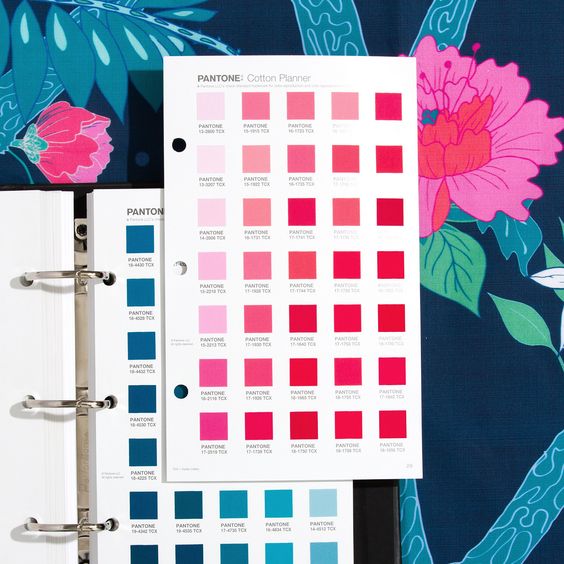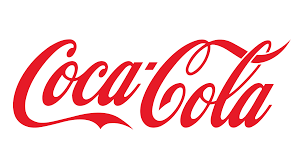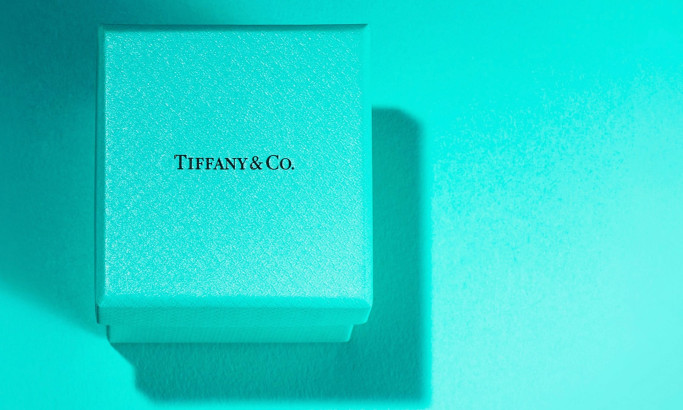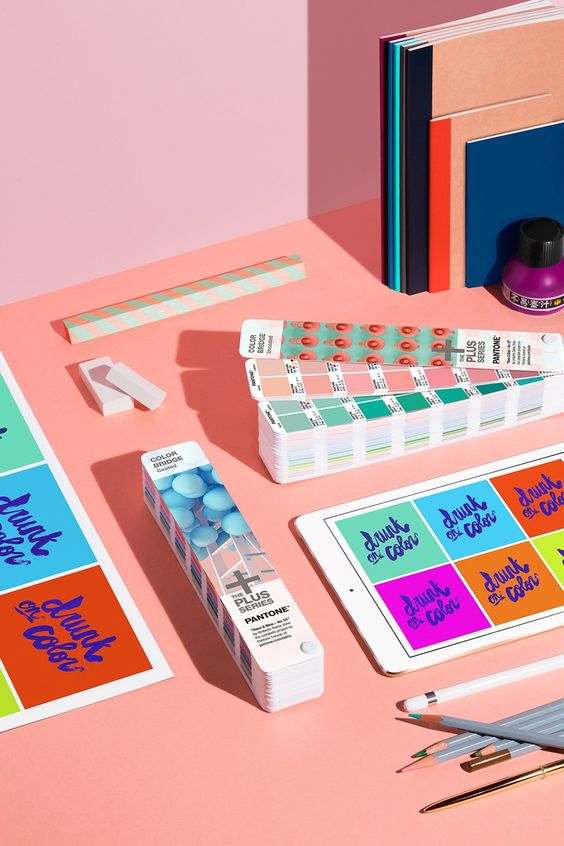In the realm of packaging, color isn’t merely a design choice. It’s a pivotal element that can significantly impact brand recognition and consumer perception. Hence, making precise color choices is imperative, and this is where the Pantone Matching System (PMS) comes into play. This globally recognized color system ensures consistency and precision, making it a go-to choice for designers and brands.
This guide aims to provide an in-depth understanding of what Pantone color is, its benefits, and how it stands against the CMYK color model, alongside offering insights on how to effectively utilize Pantone colors for your packaging needs.
What is Pantone Color?
Pantone Color, often referred to as PMS (Pantone Matching System), is a color standardization system that helps in color identification and matching. Used primarily in the printing and manufacturing industries, the Pantone system is invaluable in ensuring color consistency across product lines and branding materials.
Originating in the 1960s, the Pantone Matching System (PMS) was conceived to create a standardized color reproduction system. The Pantone system has since become a crucial tool for designers, manufacturers, and marketers across the globe. Today, the system boasts over 1,800 distinct colors, offering a vast palette for creators to choose from.
Each Pantone color has a corresponding code that helps designers and manufacturers to communicate exact color requirements without ambiguity. Furthermore, the same Pantone color will appear differently on coated vs uncoated paper due to the way the ink absorbs into the paper. So each color comes with a ‘C’ or ‘U’ suffix indicating whether the color is meant for coated or uncoated materials. For instance, PMS 185C refers to a vibrant red when printed on coated paper, while PMS 185U will look slightly different on uncoated paper.
Each year, Pantone will release a ‘Color of the Year’, which significantly influences product development and purchasing decisions in various industries, including fashion, home furnishings, and industrial design, as well as product packaging and graphic design.

Want to learn more about Pantone color? Find detailed information from Pantone Official Website.
With a chosen Pantone color in hand, the next step is bringing that color to life in your packaging. This transition from a Pantone color swatch to the actual printing process is where the magic happens, ensuring that your packaging emanates the exact hue intended.
Now armed with a fundamental understanding of what Pantone color is, let’s explore the manifold benefits it brings to the realm of packaging.
Benefits of the Pantone Color System in Packaging
The Pantone Color System offers a myriad of benefits that cater to the unique needs of the packaging industry. Here’s a breakdown of the significant advantages:
Color Consistency
The Pantone Color System ensures color uniformity across various materials and products, which is crucial for maintaining aesthetic appeal and brand integrity.
Brand Recognition
A consistent color scheme is vital for brand recognition. For instance, the iconic red color of Coca-Cola is instantly recognizable and is a vital part of the brand’s identity. The precise shade of red used by Coca-Cola is specified as Pantone 484, demonstrating how Pantone colors can be employed to maintain brand consistency.

Similarly, Tiffany & Co.’s distinctive blue packaging, specified as Pantone 1837, is instantly recognizable and has become synonymous with the luxury and elegance of the brand. Through the Pantone Matching System, Tiffany & Co ensures that its iconic blue is consistently replicated across all its packaging materials, thereby maintaining its brand identity and exclusivity.

Clear Communication
The system facilitates precise color communication between designers, manufacturers, and clients, reducing the likelihood of errors and ensuring the final product meets the desired specifications.
PMS vs CMYK: A Comparative Overview
In the realm of printing and color management, the Pantone Matching System (PMS) and the CMYK color model are pivotal. Understanding their disparities and discerning when to employ each is essential for achieving the desired outcomes in packaging design.
Here’s a comparison to help elucidate the distinctions and guide your choice based on project needs:
| Aspect | PMS | CMYK |
|---|---|---|
| Color Reproduction | Precise color matching with standardized colors. | Colors created through mixing, leading to potential variations. |
| Color Range | Broader, includes metallics and fluorescents. | Limited to colors produced by mixing four base colors. |
| Advantages | Ensures brand consistency with precise, pre-mixed inks. | Provides cost-effectiveness and a wide color range. |
| Application | Best suited for branding elements requiring exact color matching. | Ideal for full-color images and graphics with varied hues. |
| Cost | Potentially higher due to specialized inks. | More cost-effective with standard inks. |
Pantone Or CMYK, Which One Should I Use?
When embarking on a printing project, the choice between Pantone and CMYK can significantly impact the outcome. The decision largely hinges on the nature of your project. Here’s a simplified guide to help you choose:
CMYK is preferable for:
Photo printing and realistic imagery.
Multicolor images.
Projects where color variety is more crucial than color accuracy.
Pantone is ideal for:
Accurate color matching for branding and logos.
Achieving vibrant hues, darker tones, or special finishes like fluorescent and metallic colors.
Projects demanding precise color consistency across various materials.
Often used for a single spot color or as a fifth color on the printing press for precise color quality.
Converting Between CMYK and PMS
Transitioning from the CMYK color model to Pantone Matching System (PMS) is a common necessity in achieving precise color matching. Here’s a simplified guide on how to perform this conversion using Adobe Illustrator:
- Launch Adobe Illustrator and open your design file.
- Select the color you want to change.
- Convert to Pantone: Navigate to the
Editmenu, selectEdit Colors, and thenRecolor Artwork. In the new window, choose theColor Booksoption and select the Pantone color book of your choice to find the closest Pantone match.
For a visual demonstration of this process, refer to this video tutorial.
Challenges and Tips
- Color Discrepancy: A direct conversion may result in color discrepancy due to the inherent differences between the two color models. It’s advisable to anticipate some level of color variation.
- Color Limitations: Not all Pantone colors have direct CMYK equivalents, and some may not be accurately reproduced in CMYK printing.
- Proofing: Always do a print proof to check the color accuracy before proceeding with the full print job.
- Professional Help: If color accuracy is critical, consider seeking the assistance of a professional printer or color consultant.
The task of converting between PMS and CMYK, while seemingly straightforward, requires a keen eye for color and an understanding of the involved color models. Being informed about the process and potential challenges can significantly streamline the color conversion process, ensuring the end product meets the desired color specifications.
Frequently Asked Questions
You might still have some questions about PMS, and we’ve got you covered. Here, we’ve compiled some common queries to provide further clarity.
1. How do I find the Pantone color of an image?
Utilize color picker tools or software like Adobe Photoshop to identify the color, then refer to a Pantone color guide or use a digital Pantone reference to find the closest match.
2. Can Pantone colors be accurately displayed on screen?
Due to varying screen calibrations and the RGB color model used by screens, Pantone colors may not be accurately displayed. It’s best to refer to a physical Pantone color guide for the most accurate representation.
3. What’s the difference between Pantone C and Pantone U?
As covered earlier, the ‘C’ stands for Coated and ‘U’ for Uncoated, referring to the type of paper material the color is printed on, which affects the color’s appearance.
4. Is there a Pantone color for gold and silver?
Yes, Pantone has metallic colors including gold and silver, which are often used for premium or luxury packaging and branding materials.
5. How are Pantone colors created?
Pantone colors are created through a mix of 13 base pigments, mixed in specific amounts under strict quality control to achieve the desired color.
Conclusion
Choosing the right color system is paramount in achieving the desired visual appeal and brand consistency in packaging. It’s not about the superiority of Pantone over CMYK or vice versa, but about understanding the unique benefits each system offers and aligning them with your packaging goals. Whether you opt for the precise color matching of Pantone or the versatile color blending of CMYK, ensuring that your choice resonates with your brand and product requirements will yield a satisfying and effective packaging solution.
Ready to elevate your packaging with the perfect color? Reach out to us, and let’s create packaging that not only protects your products but also tells your brand story compellingly.

